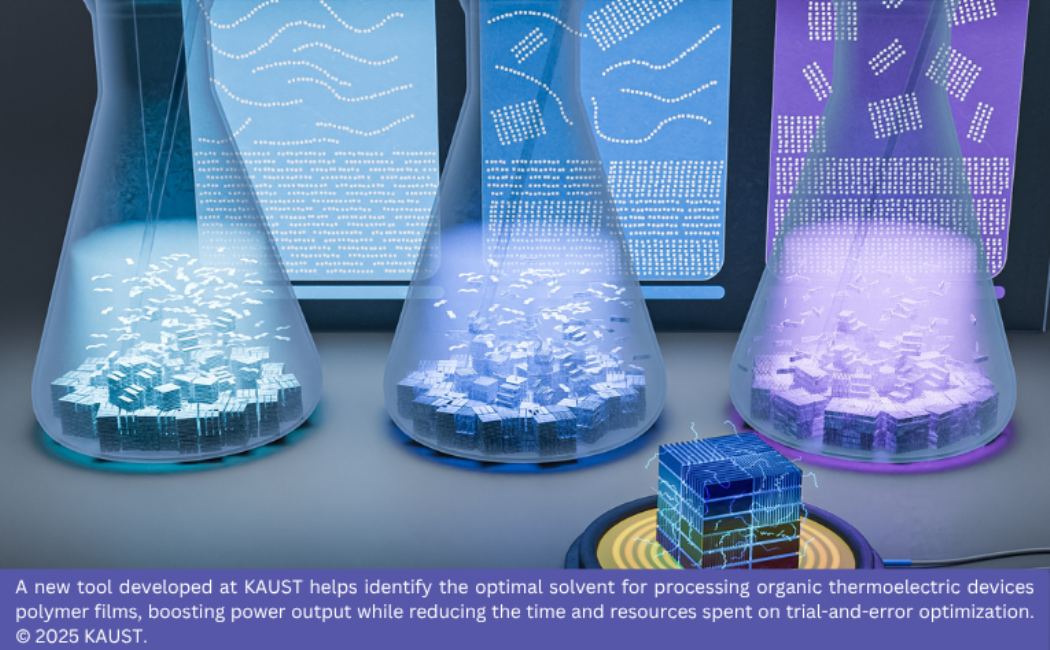By choosing the best chemical to dissolve polymer components, researchers can squeeze more electricity from leftover heat.
Organic thermoelectric devices (OTEs) convert waste heat into useful electric power, but they are not yet efficient enough for practical use. KAUST researchers have now developed a tool that predicts the best solvent to use when processing the devices’ polymer films, significantly improving their power output.
“Waste heat is present everywhere: industrial processes, car engines, air conditioners, and even in your cup of coffee, so it would be useful to recover a portion of this energy into electricity,” says Derya Baran, who led the team. “We want to use this to improve the energy autonomy of electronic devices, for example to recharge a battery without plugging it into a wall outlet.”
Conventional thermoelectric devices rely on inorganic semiconductors, such as bismuth telluride, but their high cost restricts them to niche applications. In contrast, OTEs rely on a polymer film that can be easily processed from solution to make potentially cheaper devices. These polymers form crystalline regions in the film and devices achieve the best performance when the regions line up edge-on because charge can move more easily from the hot end to the cold end of the device to generate a current.
But controlling polymer orientation has previously required costly or energy-intensive techniques. To further complicate the challenge, the device also requires additives known as dopants that add vital electrical charges to the polymer but also affect its crystallinity.
This led the KAUST team to select a solvent that helps the polymers to align while the film is being formed.
To avoid a lot of time-consuming experiments with different solvents, the researchers created a model to predict which solvent would produce the best film from a particular polymer. The model includes a series of parameters that describe how well a solvent would dissolve polymers and dopants, as well as the solvent’s boiling point. This approach depends on a concept called molecular-force-driven anisotropy (MFDA), which exploits the forces between solvent molecules, dopants and polymers to ensure these components pack together in the ideal way.
“This tool is very useful for predicting which solvent will render the polymer orientation that you need, while screening large databases of solvents. This saves a lot of time and resources on optimization through trial and error,” says team member Diego Rosas Villalva, currently based at the University of Bern in Switzerland.
.png?sfvrsn=77e474cc_0)
.png?sfvrsn=196240a8_0)
